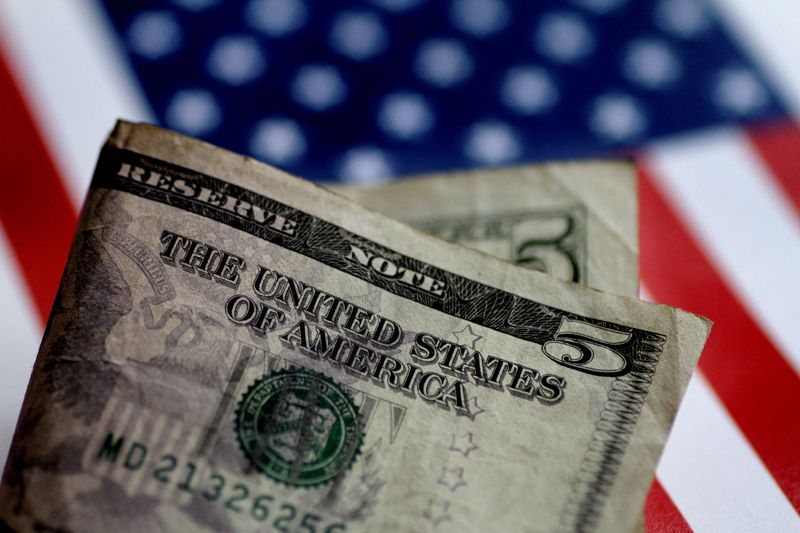“Dollar Surges as US Treasury Yields Soar on Further Fed Rate Hike Forecasts”
By Rae Wee
SINGAPORE (Reuters) – The dollar hovered near a one-month high on Tuesday, as traders upgraded forecasts of the Federal Reserve’s rate level needed to tame inflation as a stubborn, resilient labor market remains largely immune to aggressive rate hikes .
Markets were still reeling from the shock of Friday’s jobs report, which showed non-farm payrolls rose by a staggering 517,000 in January, well above expectations.
The report, in which wrong-footed traders bet on an imminent pause in the Fed’s rate-hiking cycle, boosted the dollar and sent the pound to a monthly low of $1.2006 in the previous session. It was last up 0.09% at $1.2033.
Similarly, the kiwi was up 0.06% to $0.6308 but not far off Monday’s one-month low of $0.6271.
The euro rose 0.06% to $1.0733 after falling to $1.0709 in the previous session, its lowest level since Jan. 9.
“Since last Friday (when) the US reported a higher-than-expected jobs number, it has reversed expectations that the Fed would change monetary policy,” said Tina Teng, market analyst at CMC Markets.
“I don’t think the number of jobs matters… but it definitely has a big impact on[the Fed’s]monetary policy.”
US Treasury yields rose on higher interest rate expectations, with two-year yields hitting a monthly high of 4.493% on Monday. Two-year yields were last seen at 4.4347%.
Benchmark 10-year yields last came in at 3.6305%, after also climbing to a four-week high of 3.6550% in the previous session.
Futures prices show that markets expect the Fed’s interest rate to rise just over 5.1% through July, compared to expectations of less than 5% ahead of Friday’s jobs report.
The rising greenback pushed the US Dollar Index to a monthly high near 103.76 on Monday and was last marginally lower at 103.52.
Ahead of the Reserve Bank of Australia’s (RBA) rate decision later Tuesday, the Aussie was up 0.23% to $0.6899.
The RBA is widely expected to hike interest rates by 25 basis points and the focus will be on the accompanying statement to provide clues as to the likely trajectory of monetary policy this year.
Elsewhere in Asia, the Japanese yen rose 0.2% to 132.37 per dollar, but remained close to Monday’s monthly low of 132.90 per dollar.
Tuesday’s data showed that Japan’s real wages rose in December for the first time in nine months, despite uncertainty over whether wage increases will continue to bolster the country’s economic recovery.
According to a newspaper report on Monday, the Japanese government has identified Bank of Japan (BOJ) deputy governor Masayoshi Amamiya to succeed incumbent Haruhiko Kuroda as central bank governor. Amamiya is viewed by the markets as more dovish than other competitors.
“I don’t think the BOJ will reverse monetary policy,” said CMC’s Teng, who has market hopes that the central bank will abandon its yield curve control policy once a new governor takes office.
“There are still economic concerns, there are still recession risks.”
(Reporting by Rae Wee; Editing by Jamie Freed)
Don’t miss interesting posts on Famousbio










